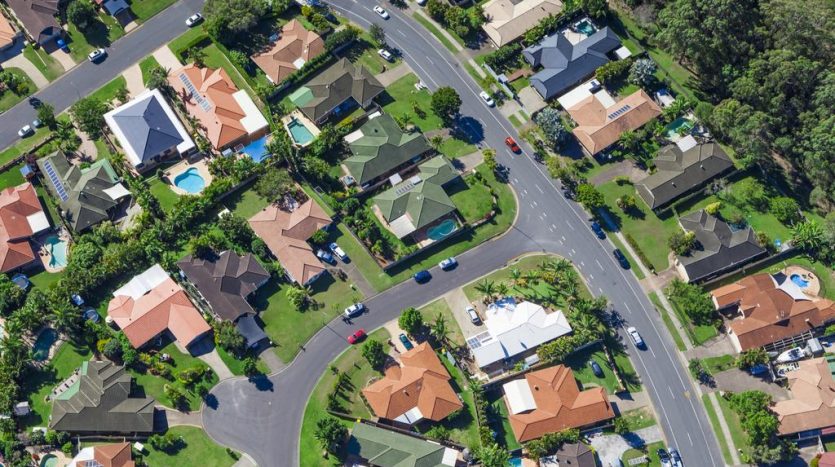PropTrack House Price Index – October 2024 – realestate.com.au
[ad_1]
Australian house prices hit new highs in October with buyers out in force at the height of the spring selling season. Although price growth has slowed, October's stronger 0.26% increase marks a re-acceleration after slowing in the winter and early spring.
This marks the 22nd consecutive month of gains in national house prices amid continued housing demand defying affordability constraints.
More homes for sale provided more choice for buyers and although price growth picked up again in October in every capital except Brisbane, Adelaide and Darwin, growth remained below the faster pace seen at the end of the summer selling season.
Significant regional differences in growth rates also remained, with different supply and demand conditions driving different performance.
Key findings from the October 2024 report:
• In October, national house prices increased by 0.26% and were 5.62% higher than a year ago.
• Prices in the United Capital Cities rose 5.85% over the past year after rising 0.28% in October. However, price performance remained mixed in Australia.
•Melbourne retreated as prices rose 0.49%, the highest monthly rate of growth among capital cities, after six months of consecutive declines in the period, with prices falling 1.96%.
•After Melbourne, Adelaide (+0.43%) and Perth (+0.32%) recorded the strongest growth of capital cities in October.
•Perth, Adelaide and Brisbane remained the leading capital cities for year-on-year growth, with prices rising by 20.58%, 14.91% and 12.51% respectively over the past year.
• Capital city prices exceeded the regions last year and this trend continued in October. Prices in the regions increased by 0.20% during the month and were 5.03% higher than the level of October 2023.
•Performance in regional areas also varied. Regional SA (+0.57%) and regional Queensland (+0.34%) led growth in October and recorded strong year-on-year growth, while prices in regional Victoria saw relative weakness, falling 1.51% over the past year.
Home price growth is accelerating as the spring selling season is in full swing
Home price growth has accelerated again after slowing in the winter and early spring, with buyers out in force at the height of the spring selling season. National home prices rose 0.26% in October and are now 5.62% higher than a year ago.
Price growth picked up again in October in every capital city except Brisbane, Adelaide and Darwin, although it remained below the pace seen at the end of the summer selling season as buyers enjoyed more choice.
A surge in properties coming on the market in recent months has been met with strong demand, but affordability constraints and persistently high interest rates have contributed to a slowdown in price growth.
The pace of house price growth in October remained mixed across the capitals, reflecting very brisk market conditions with differing supply and demand conditions continuing the varied performance across the country.
Prices in the United Capital Cities rose 5.85% over the past year, after rising 0.28% in October.
Price declines were reversed in Melbourne as prices rose 0.49%, the highest monthly growth rate among capital cities.
After Melbourne, Adelaide (+0.43%) and Perth (+0.32%) recorded the strongest growth of capital cities in October. Although Darwin was the only capital to see prices fall by 0.04% over the month.
Perth, Adelaide and Brisbane remained the leading capital cities for year-on-year growth, with prices rising by 20.58%, 14.91% and 12.51% respectively over the past year.
While growth in each of these 3 markets has slowed since the start of the year, low stock levels continue to fuel competition. In each of these markets over the past year, there is less stock on the market than historical averages amid strong buyer demand that has fueled stronger price growth.
Sellers in Perth and Adelaide maintain the lead and although the number of properties coming to market is increasing, overall market shares remain historically low as new listings are quickly absorbed amid strong buyer demand in both cities.
The relative affordability of townhouses and a tight rental market have contributed to continued strong growth in both Perth and Adelaide in recent years.
Although after sustained strong growth, house prices in Adelaide have increased by 80% over the past 5 years, this comparative advantage has been eroded. Median values in Adelaide may soon catch up with Melbourne and in fact median unit values in Adelaide have already surpassed $609,000 compared to $608,000 in Melbourne.
Melbourne's price momentum has steadily weakened as buyers enjoy more choice than other markets, with higher property taxes and rising unemployment in Victoria also playing a role. Rising taxes on investment properties have made it less attractive to own a rental property in Victoria, leading to an increase in the proportion of investors selling up.
At the same time, the rate of construction relative to population growth in Victoria over the past decade has been more balanced than in other parts of the country.
However, price falls returned in Melbourne in October, with buyers out in force for the peak of the spring selling season. Melbourne was ranked the fourth most expensive capital city in October, falling back from No. 2 after recent underperformance, and it remains to be seen whether October marks a turning point as buyers take advantage of Melbourne's emerging relative value.
Prices rose 0.49% in October, the highest monthly growth rate among capitals. However, prices remain 1.49% below the October 2023 high and 4.16% below the March 2022 peak.
Capitals maintain their leadership throughout the year
The prices of the capital exceeded the regions last year and this trend continued in October. Prices in the regions increased by 0.20% during the month and were 5.03% higher than the level of October 2023.
Performance in regional areas also varied. Regional SA (+0.57%) and regional Queensland (+0.34%) led growth in October and recorded strong year-on-year growth, while prices in regional Victoria saw relative weakness, falling 1.51% over the past year.
Different supply and demand conditions mean buyers in regional Victoria can enjoy more choice, helping to keep prices down. Meanwhile, Victoria's unemployment rate has risen over the past year and is now the highest in the country.
Home prices rise in October, while units register small declines
Nationally, home prices rose 0.27% in October, again outpacing units, while nationally, they posted a 0.19% increase in October.
National house prices increased by 5.71% over the past year, slightly outpacing the increase in unit value (5.14%). Since the pandemic, starter home values have risen 50% versus just 26% for units.
Affordability pressures, as well as the rejuvenation of urban life, have driven home price growth nationally across broadly comparable property types over the past two years, following a significant revaluation of the location that has dominated home values since the start of the pandemic.
However, this trend is different in the capitals. Last year house price growth (5.44%) significantly outpaced unit price growth (3.63%) in Sydney and Canberra, although in contrast house prices in Brisbane rose 16.88% and 11.75% over the same period. .
Price performance remains mixed in Australia
Markets in regional Queensland, SA and WA continue to record strong growth. Interest rates remain high and house prices have risen significantly in recent years while household income growth has not matched these increases, resulting in record deterioration of affordability.
In general, more affordable areas in capital cities have performed better over the past year, with home buying demand growing stronger in these areas as buyers move down the value chain. And more affluent areas of each city, such as Adelaide's north, Ipswich in Queensland and Perth's north-west and south, saw rapid price increases.
Perth was the strongest performing city last year and indeed the strongest performing market overall, with regional WA the strongest regional market.
One reason Perth is one of the hottest markets in the country is its relative affordability. Despite recent gains, Perth housing values remain favorable compared to other capital cities after a decade of underperformance relative to east coast capitals, and prices are now rising rapidly.
Low stock levels are also fueling competition, with tight supply amid strong buyer demand fueling competitive conditions and strong price growth over the past year.
Outlook
Housing demand remains robust and defies affordability constraints with prices rising across much of the country in October. Home price growth has accelerated again after slowing in the winter and early spring, with buyers out in force at the height of the spring selling season.
Although price growth picked up again in October in every capital city except Brisbane, Adelaide and Darwin, it remained below the pace seen at the end of the summer selling season as buyers enjoyed more choice.
However, the rate of growth remains variable with different supply and demand conditions driving different performance across countries.
Supporting price growth now and going forward, tax cuts in July boosted borrowing capacity and buyers' budgets, while continued growth in home prices is likely to provide incentives to tackle affordability issues. Strong population growth, tight rental markets and home equity returns also continue to fuel demand.
Meanwhile, construction activity remains subdued, adding to the chronic housing shortage.
As a result, prices are rising in a large part of the country.
While home price growth regained momentum in October, persistently high interest rates and affordability constraints weighed on it. Buyers now have more properties to choose from and uncertainty remains over the timing of interest rate cuts.
However, prices are expected to continue to rise as the busy selling season winds down.
* The PropTrack House Price Index measures monthly changes in residential property prices across Australia to provide a current picture of property market performance and trends. The PropTrack Home Price Index uses a hybrid methodology that combines resales with hedonic regression. The resale method corresponds to repeated sales of the same property, while hedonic regression estimates values based on the value of similar properties. The hybrid model allows the matching of two properties of the same type in the same Australian Bureau of Statistics Statistical Area 1 (SA1) region and controls for differences in property characteristics as in hedonic regression. The PropTrack Home Price Index is a revision index with its entire history updated monthly with current transaction information.
** This report uses realestate.com.au internal data and data from third parties including State government agencies. Current as at time of publication. This report provides general information only and is not intended to constitute any advice and should not be relied upon in doing so. If you wish to cite or refer to this report (or any findings or information contained therein) in any publication, please refer to the report as “PropTrack Home Price Index Report – July 2024”. See report for Copyright and Legal Disclaimers.
[ad_2]
Table of Contents





